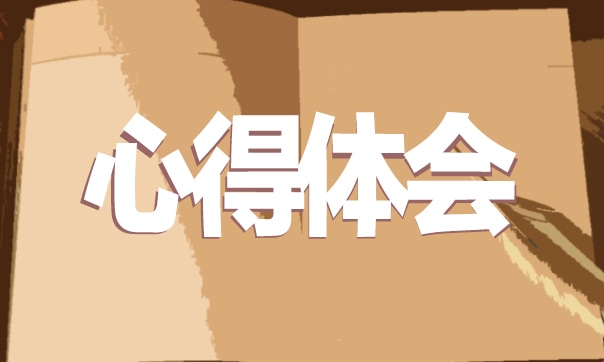托福聽力細節題讓很多考生都感到很崩潰,托福聽力材料尤其是lecture篇幅很長,想要在5-6分鐘的聽力中把握細節比較困難。今天小編給大家帶來了托福聽力細節題解題技巧,希望能夠幫助到大家,一起來學習吧。
托福聽力細節題解題技巧
一. 托福聽力細節題通常是怎么提問的?
托福聽力細節題的提問方式通常有三種,分別是:
What point does the professor make when he mentions X.X.X?
According to the professor, what have the researchers agreed on?
What does the professor say about X.X.X?
二.托福聽力細節題有哪些解題技巧?(實例解析)
細節題的出題點比較固定,只要你能聽出提示詞,抓住相關的大部分內容,那么細節題還是很容易得分的。細節題的出題點大概分為如下幾個方面:
1.對聽力中的example提問
對話或者講座中的舉例一般都是細節題喜歡考察的點。它的提示詞要么是for example, for instance, like, in this case這類的連接詞,要么是具體的事例的名詞。
實例解析:
What example does the professor give of a meme’s longevity?
l A story has been changing since it first appeared in the 1930s
l A person remembers a story for many years
l A gene is passed on through many generations without changing
l A song quickly becomes popular all over the world
這道題是官方真題Official5的第二個講座的題目。教授的這段話是這樣的:
First, longevity. A replicator must exist long enough to be able to get copied, and transfer its information. Clearly, the longer a replicator survives, the better its chances of getting its message copied and passed on. So longevity is a key characteristic of a replicator. If you take the alligator story, it can exist for a long time in individual memory, let’s say, my memory. I can tell you the story now or ten years from now, the same with the twinkle, twinkle song. So these memes have longevity because they are memorable for one reason or another.
這段話的前半部分介紹的是理論,然后通過這個鱷魚的故事來解釋這個理論。所以這道題的答案也是顯而易見的B選項。
2.對聽力材料中的提到的定義或者解釋類的內容提問
在聽力中經常會出現一些專有名詞,有些專有名詞一帶而過,有些專有名詞會在后面給出解釋,如果我們聽到帶有解釋的專有名詞,就需要提起注意,因為它可能是一個考點。它的提示詞有:it refers to,that is,that means,This is to say,in other words,in another words等。
實例解析:
What started the runway effect that led to the Sahara area of north Africa becoming a desert
l the prevailing winds became stronger
l the seasonal rains moved to a different area
l the vegetation started to die off in large areas
l the soil lost its ability to retain rainwater
教授是這樣說的:
What the Sahara experienced was um…a sort of“runaway drying effect”. As I said the monsoon migrated itself, so there was less rain in the Sahara. The land started to get drier, which in turn caused huge decrease in the amount of vegetation, because vegetation doesn’t grow as well in dry soil, right? And then, less vegetation means the soil can’t hold water as well, the soil loses its ability to retain water when it does rain. So then you have less moisture to help clouds form, nothing to evaporate for cloud formation. And then the cycle continues, less rain, drier soil, less vegetation, fewer clouds, less rain etc. etc..
教授說完“runaway drying effect”之后,并沒有轉移話題,而是接著介紹了這個effect的過程到底是什么樣的。如果我們能聽到“runaway drying effect”之后的解釋,那么這道題也可以迎刃而解。
3.針對聽力材料中的原因進行提問
在聽力中,因為考慮到學生的能力,所以句子跟句子之間的邏輯關系沒有閱讀中那么復雜。因果關系是其中最好表述的一種,所以在聽力中也是很常見的。它也是考點之一。前因后果:therefore,consequently,as a consequence,result in,lead to。前果后因:result from,originate from,arise out of。
實例解析:
According to the professor, what led scientists to characterize the Nightcap Oak as primitive
l it has no evolutionary connection to other trees growing in Australia today
l it has an inefficient reproductive system
l its flower are located at the bases of the leaves
l it is similar to some ancient fossils
教授說:
Now another interesting thing about the Nightcap Oak is that it represents a very old type kind of tree that grew a hundred million years ago. Um, we found fossils that old that bear remarkable resemblance to the tree. So, it’s a primitive tree. A living fossil you might say.
我們可以看出,fossils that old that bear remarkable resemblance to the treeà it’s a primitive tree。本題給出結果,對原因題型提問。所以D選項正確。
4.針對聽力材料中的結尾細節進行提問
通常我們在對話或者講座的結尾都會走神,因為聽力持續的時間太長,導致我們在聽力快要結束的時候,松一口氣的同時,注意力也不能集中在聽力上了。但是往往結尾也是考點之一。
實例解析:
What is one way the professor mention that can help with art restoration?
l By re-creating the pigments and binding agents used by artists of earlier eras
l By removing pigments and binding agents that dissolve paintings over time
l By creating protective coatings of paint that do not damage original paintings
l By developing ways to safely remove paint added by previous restorers
教授的最后一句話就是答案:
Then if we want to undo some bad restoration attempts, we can determine what kind of process we can use to remove them to dissolve the paint and uncover the original.
正確選項是D。在對話中,結尾的位置經常是教授提出建議的位置,或者是教授提出要求的位置。這樣就更需要注意他們的內容,因為很大可能會出考題。所以在平時做題的時候,我們要努力克制,一定要聽到最后。
5.針對數字,地點,人物進行提問
在聽力中會有一些數字,地點,人物之類的內容。這些數字,地點,人物本身不重要,重要的是他們之后跟著的內容。所以在聽到這些內容的時候,一定要了解他們之后的內容的含義。
實例解析:
According to the professor, what were two ways that the situation of women artists had changed by then end of the nineteenth century in Paris? (Click on 2 answers.)
l Women and men took art classes together
l Women artists played a greater role in the Salon exhibitions
l More schools were established by women artists
l Fewer women artists were traveling to Paris
教授說:
Before the late 19 century, if the women who want to become an artist have to take private lessons or learn from family members. They have more limited options than men did. But around 1870s, some artists in Paris began to offer classes for female students. These classes were for women only. And by the end of the 19 century, it became much more common for woman and man to study together in the same classes.
By the last two decades of 19 century, one fifth of the paintings in the salon were by woman, much higher than in the past.
答案就很顯而易見,是AB選項。
6.針對對比,類比或者相似的內容進行提問
在講座中尤其喜歡拿兩樣事物對比或者類比著說,如果出現這種情況,就需要注意兩個事物的各自的特征或者相同的特征,因為這里很可能是考點。
實例解析:
What does the professor compare to a housefly laying many eggs?
l A child learning many different ideas from her parents
l Alligators reproducing in New York sewers
l Different people remembering different versions of a story
l A person singing the“Twinkle, twinkle”song many times
教授說:
Next, fecundity. Fecundity is the ability to reproduce in large numbers. For example, the common housefly reproduces by laying several thousand eggs, so each fly gene gets copied thousands of times. Memes, well, they can be reproduced in large numbers as well. How many times have you sung the‘twinkle, twinkle song’to someone? Each time you replicated the song, and maybe passed it along to someone who did not know it yet, a small child maybe.
教授用housefly的例子來說明基因的傳遞,然后作類比,說明通過給別人唱“小星星”這首歌,文化基因是如何傳遞的。所以D選項就是我們的正確答案。
三.托福聽力細節題的選項有哪些特征?
細節題一定是原文出現過的內容,他們可能是同義改寫,也可能是用原文中的詞匯概述答案。所以對于原文中沒有出現過的內容,一定是錯的。這就是細節題跟推斷題之間的區別。
托福聽力細節題的錯誤選項有如下幾種:
1.原文提到過的內容,但是不在對應的位置。它可能是上一個話題的內容,也可能是下一個話題的內容。這樣的選項比較具有迷惑性,容易錯選。如果在做筆記的過程中能夠分段落進行記載,那么就可以避免這種現象。
2.部分原文中的內容+部分原文中沒有提到的內容。這樣的選項我們會自動忽略沒有出現過的內容,所以在讀題的時候一定要仔細。不斷的問自己這個信息點到底是否在聽力中出現過。
3.完全沒有出現過的內容。這種選項一般我們可以直接省略。
4.與原文不符的內容。有些選項會跟原文不符,但是因為他們跟原文的內容太像,太接近,我們又忽略了他們否定的內容,所以在做題過程中也需要注意。
托福聽力:5步提高速度法
第一步:盲聽。托福聽力不看材料聽,了解大概講的內容就行。同時還把聽力的Gist題給練了。
第二步:再聽。這一遍要照著材料聽。新托福聽力精聽每一個發音和那種洋腔洋調。尤其要注意剛才在遍的時候你沒有聽清楚的部分,是生詞的緣故,還是發音的緣故。 如果是生詞,你不用著急,查一下字典,把音標標注一下就好,用金山詞霸,那里有發音,盡管個別會有不準的(這個你可以根據音標自己判定),但絕大多數都是準的,而且也還是美式發音。一定要讀幾遍,聲音熟悉就很容易記住單詞了。如果是發音的緣故,診斷一下是連音,省音,還是弱讀,縮讀,同化等現象。這一步你可以多聽幾遍新托福聽力,熟悉句子的連續聲音輸入的過程。你可以整段泛聽,也可以單句精聽。根據你當時的感受來。
第三步:聽后跟讀。前兩步聽熟了,做了很好的鋪墊以后,這一步才開始跟讀。起初,建議單句跟讀,模仿發音。增加托福聽力訓練,在聽下一句的時候要復習前一句里出現的音素,同一音素在不同單詞中的發音給你的感覺是不同的,認真體會。這就是外語的差異。同時還要學習新出現的音素,總之無數的材料都是由那48個音素堆積而成的聲音集合。 另外,在讀的過程中,標注一下重音(具體到每個音節的詞重音),語調 (升調,降調和降升調,就是拐彎的調子) 和停頓(不只是標點符號后的停頓,主要是句子內部的意群停頓)。如果你覺得這個復雜,那么就聽N遍之后跟著感覺走吧。
第四步:只讀不聽。在第三步足夠熟練以后,這一步要做的就是根據剛才耳朵被沖擊的感覺去讀,讀熟為止。體會在第三步中你標注的東西,在這一步里要實踐出來。
第五步:邊聽邊讀。就是達到聽說同步。起初可以看材料,然后慢慢脫離材料。以至于到后來,你會上癮,聽到別人講英語,你的嘴巴都會不由自主的跟著動起來。
托福聽力:考場上要避免九個錯誤
一、原文信息漏聽
這是比較常見的一種錯誤原因,在聽音過程中,由于種.種原因導致考點細節漏聽,種.種原因可能包括:
1、聽音基礎不好,比如單詞量少,語法差導致各種聽不懂
2、由于聽力材料語速較快,思路跟不上語速
3、由于外界干擾走神兒或者習慣性注意力不集中
解決方法:
1、做聽寫、背單詞、學語法提升基礎聽音能力
2、做跟讀模仿提升信息處理速度
3、做連續聽音練習提升聽音耐力或做抗干擾練習,比如做聽力時,同時播放英文電視廣播等
二、選項中的單詞不認識
選項中的單詞不認識直接導致選項無法正常翻譯理解。
例:
Why does the professor discuss refugia? Click on 2 answers
A. To explain that the location of coralwithin a reef affects the coral's ability to survive
B. To point out why some coral species aremore susceptible to bleaching than others
C. To suggest that bleaching is not asdetrimental to coral health as first thought
D. To illustrate the importance of studyingcoral that has a low vulnerability of bleaching
這道題B選項中的susceptible,C選項中的detrimental,D選項中的vulnerability很多同學不認識,不知其意,所以在選擇答案時出現困難。
解決方法:
課后通過單詞書大量積累詞匯,做題時在文章中和選項中積累生詞,形成自己的生詞本。
三、選項翻譯錯誤
由于對句子成分辨識不清,導致翻譯出錯。
例:
What point do the speakersmake about the background of The Dreamer?
A. It is a good example ofBeaux's unusual style of brushstroke.
B. It resembles the backgrounds ofother Beaux portraits.C. Its lack of clarity emphasizesthe theme of the painting.
D. It is meant to suggest thatthe woman is in a dark room.
這道題的正確答案為C,正確翻譯是:缺少清晰度的背景強調了這幅畫的主題
很多同學把這句話中的lack看成了謂語動詞,翻譯成:背景沒有清晰的強調這幅畫的主題,和正確的翻譯截然相反,導致選錯。
解決方法:
仔細研究語法,確定好詞性和句子成分。
四、形近詞看錯
由于把選項中的形近詞看混,或者把某個詞看成另外一個形近詞,導致理解錯誤。
例:
What is the lecture mainly about?
A. The environmental effects of heap roasting
B. The reforestation efforts in the Copper Basin
C. The process of mining and producing copper
D. Damages caused during an attempt to clean up industrial waste
有部分同學把AB選項中的effect和effort看混,或者把B選項中的reforestation看成deforestation,導致理解的意思截然不同,所以選錯。
解決方法:
睜大雙眼,仔細審題審選項,二次檢查。
五、沒有關注單詞復數
在內容主旨題中,做主語的名詞的單復數有截然不同的意義,如果是復數名詞則意味著這篇講座必須講解多個事物或者從多角度多方面講解某個事物,如果此篇講座只講解了單一事物或一個方面,則復數選項為錯,很多同學沒有仔細關注單復數的變化,導致選錯。
例:
What are the speakers mainly discussing?
A. An architect from the United States and a house design she created
B. The disadvantage of houses based on a square design
C. Difficulties faced by residential architects in the nineteenth century
D. Women who had a major influence on architecture in the United States
這道題的正確答案為A,很多同學選D,D選項的主語是women,而這篇講座只講了一個女建筑師的事情,所以排除D。
解決方法:
睜大雙眼,仔細辨識單復數結合原文綜合思考。
六、由于某個關鍵詞而選擇該答案
托福聽力陷阱選項中有一種迷惑型極強的選項,里面包含了原文中的某些關鍵詞,但是整句話做了細節篡改導致似是而非,部分同學由于只看到關鍵詞而沒有仔細翻譯整個選項的意思就做出選擇導致選錯。
例:
What characteristic of notothenioids helpsthem survive in subfreezing temperatures?
A. They maintain an unusually high bodytemperature.
B. A special tissue in their eyes enablesthem to see through ice.
C. Special proteins make their bloodcirculate too fast to freeze.
D. Ice crystals in their bodies are preventedfrom growing large enough to harm them.
這道題原文中的表述是notothenioids這種南極魚由于體內有某種蛋白質導致它們能在零度以下的水溫里生存,很多同學看到C選項中的proteins直接選擇了改答案,但是整句話中對proteins的解釋和原文是不符的,是典型的細節迷惑型選項,正確答案為D,對proteins的正確解釋。
解決方法:
了解這種細節迷惑型選項的普遍存在性,注意解題時思考避讓。
七、對題型的解題思路不熟
由于對題型的解題思路理解不透徹,不遵守,主觀排除正確答案。
例:
Whathad the man assumed about human impact on the environment?
A. Thathuman impact on the environment is difficult to measure
B. Thathumans have only recently had an impact on the environment
C. Thathuman impact on the environment is always harmful
D. Thathuman impact on the environment cannot be avoided
這道題正確答案是C,很多同學認為C選項的描述過于或者不符合事實所以直接主觀排除,但是這道題的題干是一道轉述型細節題,即問的是文中的男生過去認為人類對環境的影響是什么情況?C選項確實是原文中男生的想法。
解決方法:
仔細研究聽力部分的8種題型,遵守相應的解題原則。
八、選錯位型選項
錯位型選項是普遍存在的一種錯誤選項類型,托福聽力出題規律是每一段有一道題,如果某一道題的選項里包含了其他段落的表述,則此類選項叫做錯位型選項,應予以排除。很多同學做每一道題都用全文的信息去找答案,這種思路是萬萬不可的。
例:
What does the professor say about the function of the papillae?
A. They produce dye in different colors
B. They propel the octopus through the water
C. They change the texture of the octopus skin
D. They help the octopus contract into a smaller shape
這道題題干中的papillae是和原文中的texture相關的表述,所以直接對應C答案,A答案對于color的闡述以及C答案對于shape的描寫都是其他段落內容,屬于錯位型選項。
解決方法:
了解錯位型選項的普遍存在性,做題時按層次思考找答案。
九、沒有綜合應用解題方法
在信息漏聽時,有一些推薦的某種程度上可以彌補的答題小技巧,時而可以提升答題正確率,部分同學對這些方法掌握不熟練忘記應用導致可以選對的題目后還是選錯了。
例:
What is the professor's opinion about coraltransplantation?
A. It is cost-effective
B. It is long-term solution
C. It is producing encouraging results
D. It does not solve the underlying problems
這道題在聽音信息缺失的情況下,可以應用三正一反原則選擇D答案,即ABC都是積極肯定的描述,只有D是消極否定的,所以優先考慮D答案。
解決方法:
在信息漏聽時,綜合應用老師講過的方法答題,但注意不要用這種方法純粹的投機取巧,在平時練習聽力時,還是以提升自身實力為主。
托福聽力相關文章:
★ 2020托福聽力5大出題規律是什么
★ 英語文摘
★ 大學英語學習計劃書
★ 短期內提升托福聽說讀寫的方法
★ 北京高考英語聽力將一年兩考 教育部正審批方案
★ 托福聽力常見題型解題思路講解之主旨題和細節題
★ 托福聽力7大類關鍵信號詞全面講解
★ 托福聽力備考階段高效提升必做4件事
★ 改善托福聽力表現和得分要從這5個方面入手
★ 托福聽力做筆記2個實用小技巧分享
上一篇:托福聽力經驗之練習和技巧結合
下一篇:托福聽力9大低分因素





